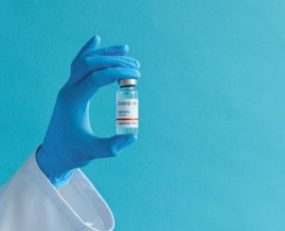
The chaos surrounding vaccine production in Europe and its political consequences were, perhaps, not so surprising. In the present circumstances, speed is of the essence and many nations have now realised that they have not put the necessary supply chain in-place to deliver at the time and volume required. The reaction has been that of political panic, expressing itself by attempts to use export controls to secure as many resources as possible.
Much of the friction has been driven by the familiar problem of supply chain constraints. Politicians’ ire has been directed at Astrazeneca but Astrazeneca’s production strategy is dependent on sub-contractors such as Novasep, a bio-chemical producer that provides the virus that acts as the vector for the Astrazeneca/Oxford vaccine. Novasep have experienced problems scaling-up production and this has acted as a bottleneck in the wider production network.
The irony is that Astrazeneca/Oxford’s production strategy emphasises regional production hubs and it was in the process of building a supply chain based on production centres in the Netherlands, Italy and Germany dedicated to continental Europe. The model for this was the UK production structure, with the emerging expertise in the UK used to develop the continental production facilities.
The ‘solution’ to the present tensions is likely to take the form of the emergence of a European Astrazeneca/Oxford supply chain, presumably emerging in Q2. The contrast is with Pfizer, whose more centralised production model and supply chain has also slowed through Q1 but ought to recover into Q2 only for this production to be gobbled-up by desperate Europeans. This has implications for nations outside Europe as the Pfizer facility in Belgium supplies much of the rest of the world as well.
The prospect in the near-term is that Astrazeneca’s production capacity in the UK will surge, leading to excess production being exported both to continental Europe but perhaps, even more, much of the rest of the world. That said the position of India is still prominent, with the prospect of large volumes surging across the world from SII’s facility in Pune still to be realised.
The problem of production and supply chain management keeps popping-up across the vaccine sector. For example, Johnson & Johnson Janssen single dose viral-vector vaccine has demonstrated a reasonable level of efficacy in its phase3 trails and offers the prospect of vaccination operations of greater simplicity and speed.
The problem is Johnson & Johnson are struggling with production. They appear to have shifted the locus of their production efforts from Leiden in the Netherlands, where they have considerable resources, to a sub-contractor in Baltimore. J&J have seemed to admit that this move has resulted in delays to the production-plan. Like AstraZeneca and Pfizer, they are struggling with the technology of production.
Although there has been much speculation about logistics problems such as packaging, storage or transport, these have been largely solved not least due to the existing capacity of the pharma logistics sector. Rather, the real problems on the supply chain have been around the engineering issues of production. These are clearly likely to be resolved over the next few months, leading to a burst of vaccine distribution worldwide.
Source: Transport Intelligence, February 4, 2021
Author: Transport Intelligence
For more information on vaccine distribution follow the link for the whitepaper, COVID-19: The Challenge of Vaccinating the World, written by Ti Insight’s Chief Analyst, Thomas Cullen.